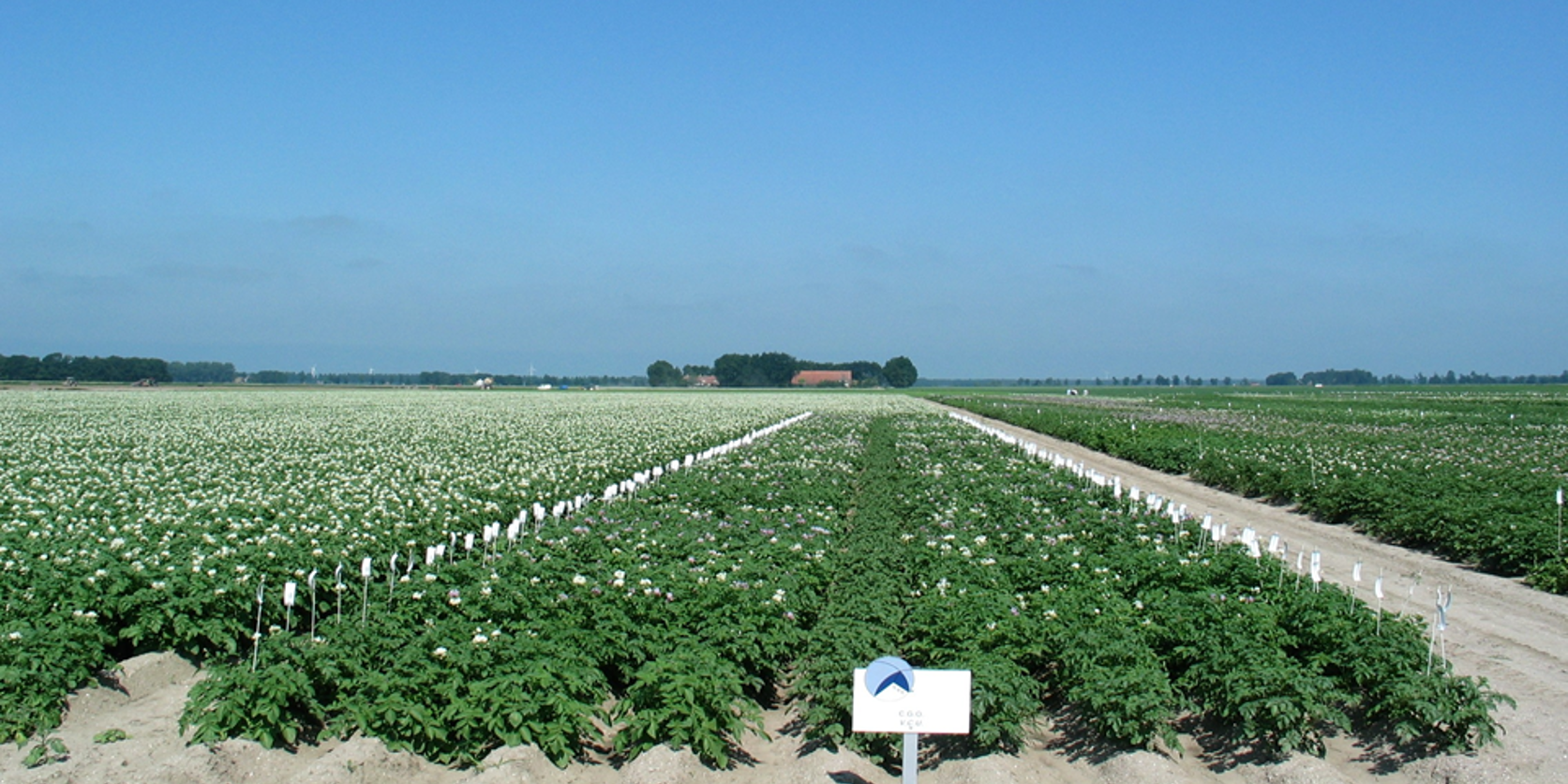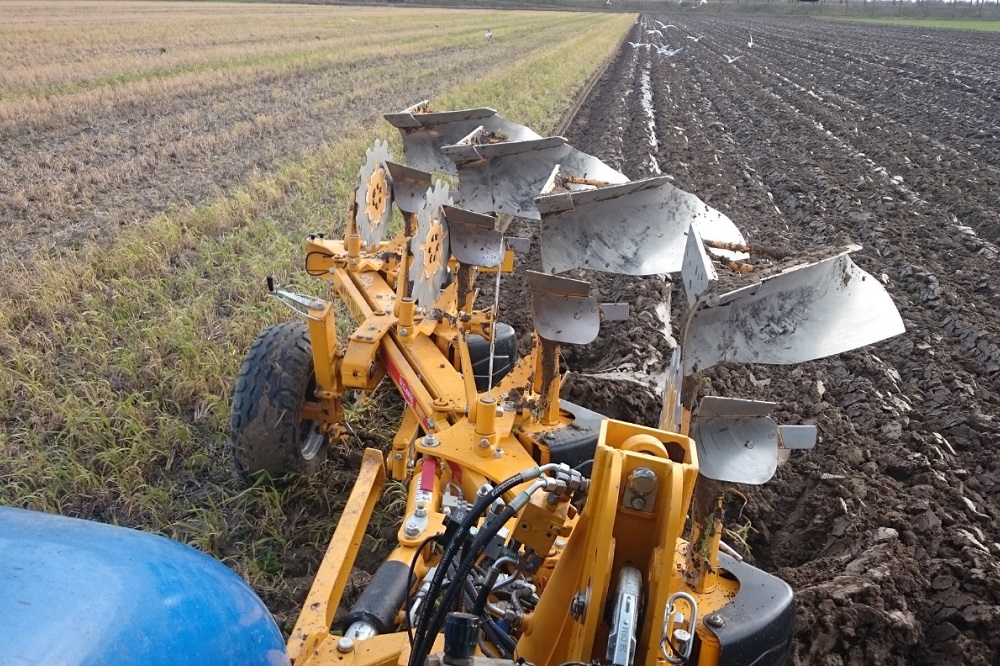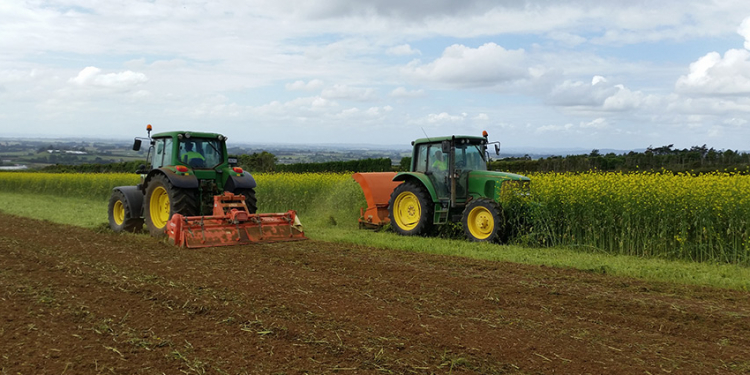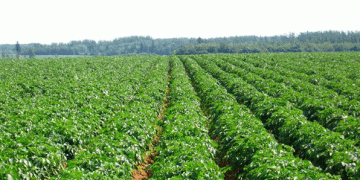According to current regulations, the cultivation of potatoes is possible according to a crop rotation of at least 1:3. In a number of cases, an exemption can be obtained for the cultivation of consumption and starch potatoes.

In the cases below it is possible to get an exemption for the 1:3 crop rotation.
Old grassland
If a plot has been in grass for at least eight consecutive years; it is possible to grow potatoes for two years in a row immediately after splitting.
land consolidation
In land consolidation areas, the old plot layout can often not have been taken into account in the new situation when setting up a new building plan . This means that in the classification of potato cultivation in the context of crop rotation regulations , previous potato cultivations can not always be taken into account . The exemption option offers the opportunity to set up a good building plan after the allocation of new plots.
reclassification
This includes a change in the plots. As a result, a new construction plan has to be drawn up and in which the previous potato crops cannot always be taken into account. The reason for changing the plot layout can be, for example: business expansion, reduction in size by, for example, buying or selling land, takeover of a company, road construction, filling in or constructing ditches, plot paths and the like.
Exemption from special situations
Special situations include the following:
- Test fields for which a 1:1 or 1:2 cultivation is necessary or can hardly be avoided.
- Young or to be planted orchards. for land on which fruit trees have been planted in the autumn of 2021 or before the year 2022 or a closed orchard in front of itself, it is possible to practice potato cultivation once in a closer crop rotation by means of this exemption.
- Withdrawal from agricultural use
- If a plot has been used as an orchard for at least eight consecutive years, it is possible to grow potatoes for two consecutive years immediately after harvesting.
- Potato as a decoy. Exemption can be obtained for 1:1 and also for 1:2 cultivation.
Rates and conditions
For the rates and the exact conditions to qualify for an exemption on the basis of one of the above cases, the NAK refers to the page www.nak/teeltspreis/potatomoeheid – crop rotation or early harvesting. The application form can also be found here.
Source: NAK
Growing and crop rotation potatoes without plowing, a good idea?
Does it make sense not to plow the field before planting potatoes? Doesn’t yield collapse and what does non-ploughing do to biodiversity, water management and nitrogen leaching? On the Potato Demo Day, Wageningen researchers Janjo de Haan and Derk van Balen will discuss plows and alternative processing methods. Seven questions.

What exactly is plowing?
Derk van Balen: “Ploughing is a standard tillage. The soil is turned and intensively worked with plows. According to many, less intensive tillage is better for the soil. We call this reduced tillage and the best known form of this is non-turning tillage. There is a wide variety of reduced tillage systems. You can see spading as an intermediate form of turning – not turning tillage.”
Do you have a good crop of potatoes if you don’t plow?
Janjo de Haan: “The research in the system trials of the PPP Beter Bodembeheer has shown that it is possible to grow potatoes and crop rotation without plowing, or with reduced tillage. It incurs no additional costs and does not cost any revenue. There even seems to be a small plus for potato cultivation and crop rotation”
What else does not plowing yield?
Janjo de Haan: “In terms of water regulation and water purification, reduced tillage on clay scores better than plowing. Due to the better structure, the water management is better and water is drained more easily. No clear effect on the structure and water management is visible on sandy soil.”
And what does non-ploughing do to biodiversity?
Janjo de Haan: “Not plowing is demonstrably positive for biodiversity on clay soil. There we measured more worms, insects and spiders with reduced tillage. These also provide the better structure. We have not performed these types of measurements on sand and valley soil.”
What are the effects on nutrient leaching?
Derk van Balen: “There is no effect of reduced tillage on the nutrient surpluses, although reduced tillage on both clay and sand appears to have a lower risk of nitrogen leaching. We are still figuring out how this works.”
Can a farmer just switch to reduced tillage?
Janjo de Haan: “No. You have to think carefully about incorporating reduced tillage into your entire way of working. Weed pressure can certainly be significantly higher in the first years. Keeping the soil covered for as long as possible helps suppress weeds. Frost-sensitive green manures are preferred, but sometimes you still have to apply in the spring. To be able to sow in crop residues, special seed drills with discs are needed.”
Derk van Balen: “Changing to reduced tillage can also have an effect on crop rotation, choice of green manures, weed control strategy and fertilization. In this dry spring, for example, we see that the digestion of crop residues starts late. This has consequences for the release of nitrogen.”
And the weather conditions?
Derk van Balen: “Because of better drainage, we see this year in particular that the unplowed soil in the subsoil is drier than plowed soil, which is favorable for being able to carry out treatments in the spring. The topsoil is generally more moist than plowed soil, requiring pre-treatment to allow it to dry before sowing or planting. This year we see that the unplowed soil is significantly drier in the cultivation furrow than plowed soil, which may have an effect on the final yield. However, we experience that the potential of reduced tillage in a changing climate is greater than with ploughing.”







